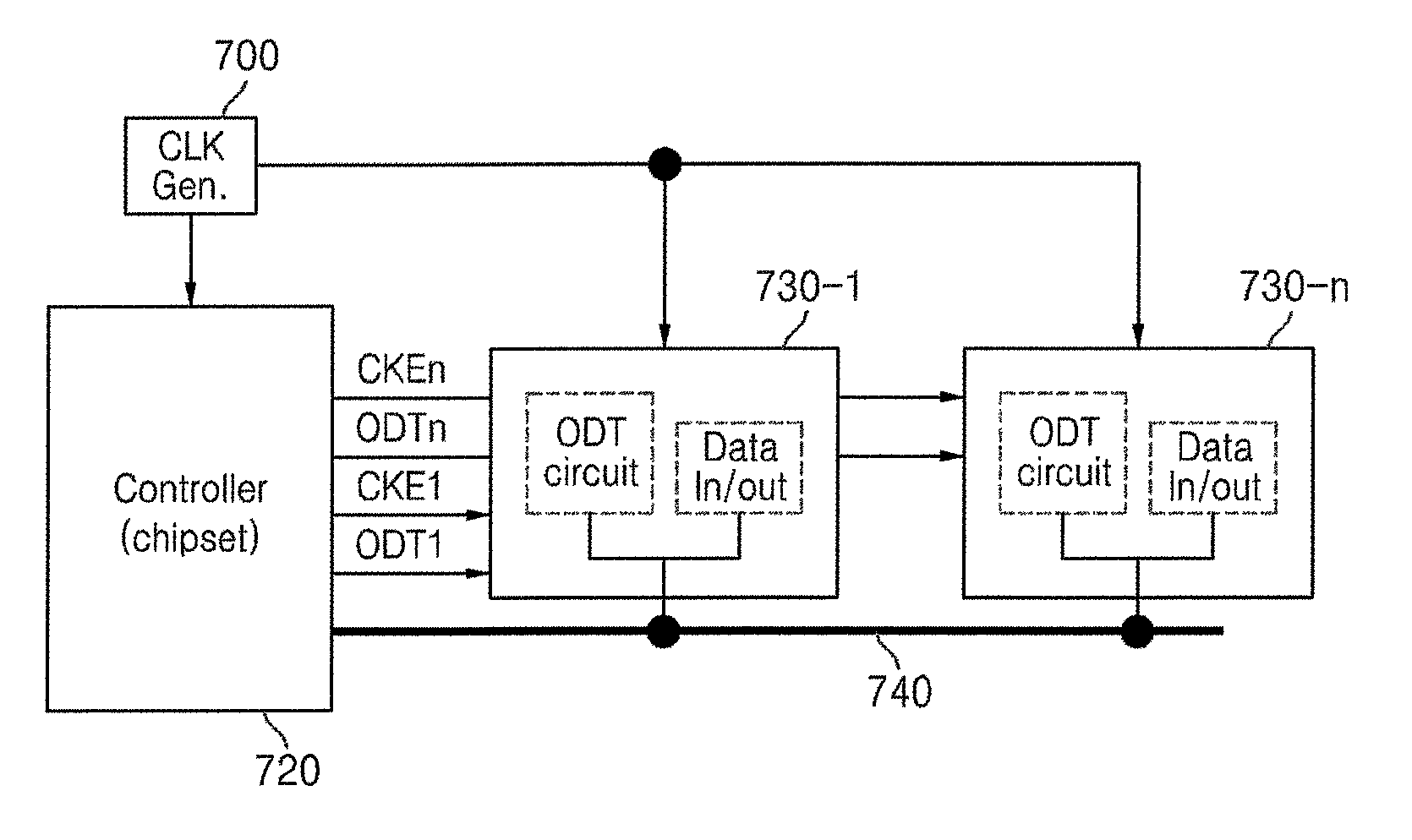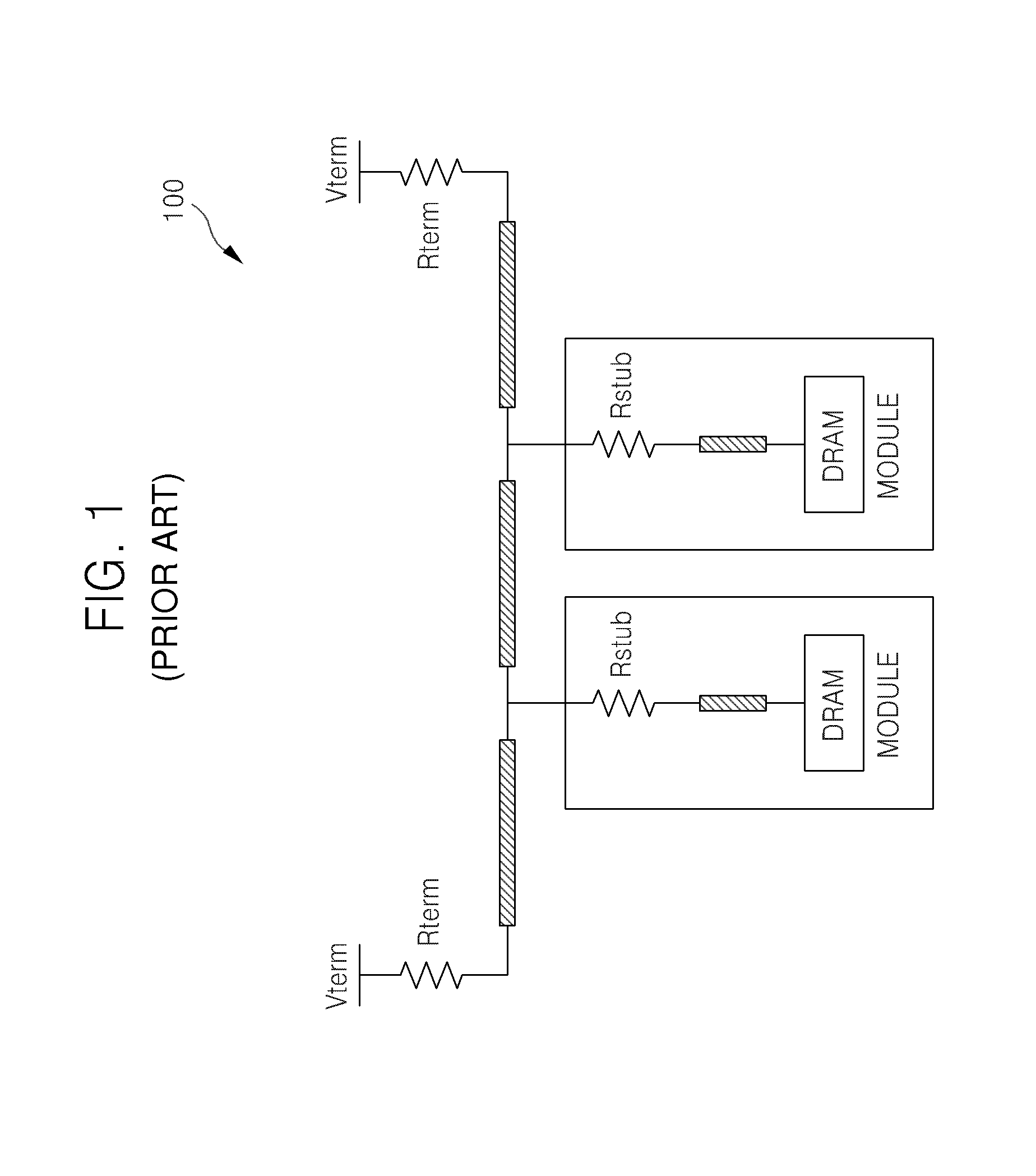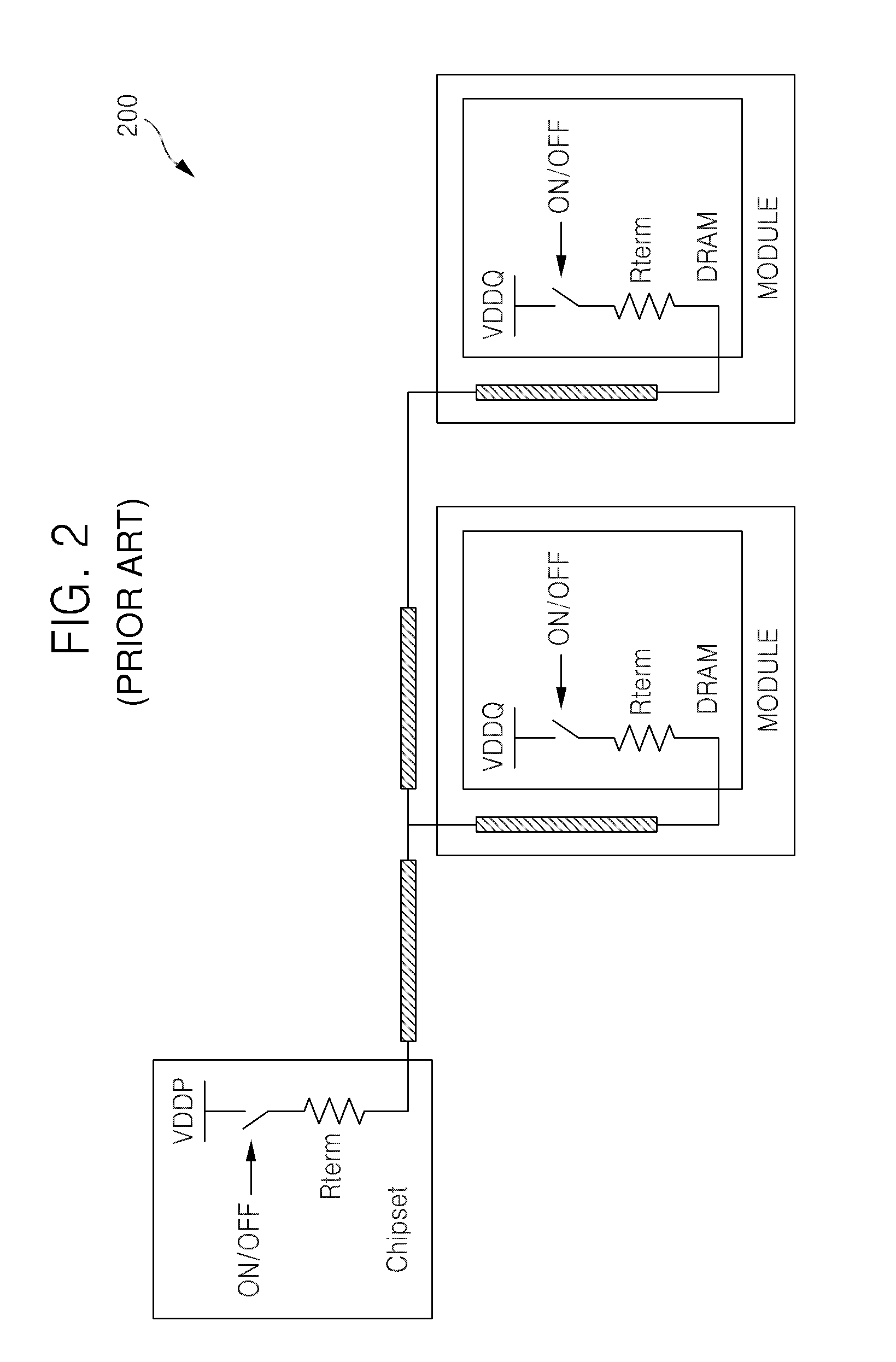Memory systems, on-die termination (ODT) circuits, and method of ODT control
a memory system and on-die termination technology, applied in the field of memory systems, can solve problems such as degraded signal integrity, increased data rate, and signal integrity degraded in the memory system
- Summary
- Abstract
- Description
- Claims
- Application Information
AI Technical Summary
Benefits of technology
Problems solved by technology
Method used
Image
Examples
Embodiment Construction
[0032]The present invention will now be described in detail by way of preferred, but non-limiting, embodiments of the invention. The embodiments are presented as examples only, and the invention is not considered to be limited to the specific configurations and / or features of the exemplary embodiments. Like elements are represented by like reference numbers throughout the drawings.
[0033]In commonly assigned U.S. Pat. No. 6,754,132, various on-die-termination (ODT) techniques are described.
[0034]The '132 patent describes, for example, an ODT control circuit having a synchronous transmission path and an asynchronous transmission path. Briefly, the synchronous path is utilized to process an externally supplied ODT control signal during an active / standby operational mode of the memory device, and the asynchronous path is utilized to process the externally supplied ODT control signal during a pre-charge power down operational mode of the memory device.
[0035]Memory devices, such as DDR (d...
PUM
 Login to View More
Login to View More Abstract
Description
Claims
Application Information
 Login to View More
Login to View More - R&D
- Intellectual Property
- Life Sciences
- Materials
- Tech Scout
- Unparalleled Data Quality
- Higher Quality Content
- 60% Fewer Hallucinations
Browse by: Latest US Patents, China's latest patents, Technical Efficacy Thesaurus, Application Domain, Technology Topic, Popular Technical Reports.
© 2025 PatSnap. All rights reserved.Legal|Privacy policy|Modern Slavery Act Transparency Statement|Sitemap|About US| Contact US: help@patsnap.com



